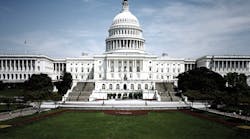One part of the Federal Budget Agreement is a new provision that would authorize the Occupational Safety and Health Administration (OSHA) to increase penalties for the first time since 1990. The agreement, which was worked out behind closed doors in Washington in November, allowed OSHA to make what is being called a one-time “catch-up” increase to compensate for more nearly 25 years of no increases.
The catch-up was included in the Bipartisan Budget Act of 2015 and signed by President Barrack Obama on November 2, 2015. The amount was determined based on the fact that a catch-up increase cannot exceed the overall inflation rate from 1990 through 2015, as measured by the Consumer Price Index (CPI). That number is expected to be about 82 percent.
For small businesses, it could mean a significant jump. As a result of this catch-up measure, the $7,000 cap on serious violations could increase to $12,744, while the $70,000 limit on willful and repeat violations could increase to $125,438.
As of press time, OSHA has not commented on this development, but it is not entirely clear whether it will actually choose to increase penalties to the full extent allowed. It is expected OSHA will likely implement most, if not all, of the increases. Raising the maximum fines in line CPI for the catch-up boost will require OSHA to publish an interim final rule by July 1, 2016. The initial penalty increases will become effective by August 1, 2016, and the final adjustment is expected to take effect on August 31.
After this one-time catch-up increase is fully implemented, OSHA will likely annually increase maximum penalties the amount of the rate of inflation for the prior fiscal year. Put another way, the catch-up may be one time, but it isn’t likely it will be the final increase in penalties businesses can face.
“This increase in penalties may not be a one-time thing, as the recent budget bill requires OSHA to annually implement cost of living increases, with the adjustment tied to the year-over-year percentage increase in the Consumer Price Index,” explained Jennifer Schaller, managing director of the National Law Review. “Every January 15, employers will need to monitor OSHA updates to civil penalties in the Federal Register to determine whether an increase has been implemented and, if so, by how much.”
The budget changes will take effect in all states regulated by federal OSHA, but the law does not automatically apply to states regulated by state plans, since those programs must be deemed at least as effective as federal OSHA. As a result, state plans are likely to increase civil penalties as well.
The Federal Office of Management and Budget will also issue guidance on implementing the bill’s provisions. Under the Occupational Safety and Health Act of 1970, employers have the responsibility to provide a workplace that is regarded to be free of recognized hazards, and this law provides a range of tools and strategies to OSHA to apply them in ways the agency deems most effective and efficient.
What isn’t clear is how the new fines might affect small businesses. In 2010, OSHA instituted new policies aimed at increasing average amounts for certain types of safety and health fines, but backpedaled in 2012 in how it would address fines imposed on small businesses. In April 2012, the agency announced it would reduce fines for companies with 25 or less employees — increasing reductions from 40 to 60 percent.
In November, OSHA also updated its hazard communication webpage to make it easier for users to access topics related to the agency’s revised standards. OSHA had updated it’s Hazard Communication Standard in 2012, and the new page features tabs to direct users to various letters of interpretation, guidance documents and other frequently asked questions about the regulations.
OSHA compliance is a must for not only the safety of employees but also the bottom line of businesses. Stay tuned to see how the latest catch-up increase could affect you and your business.





